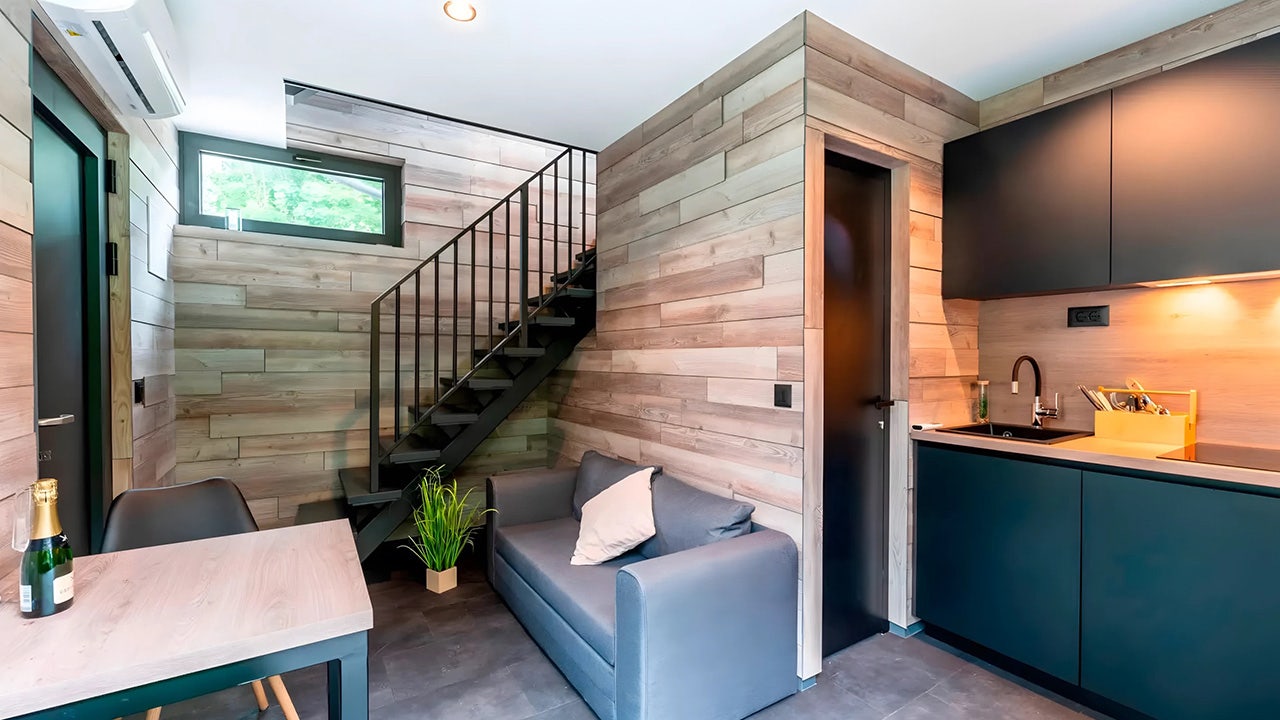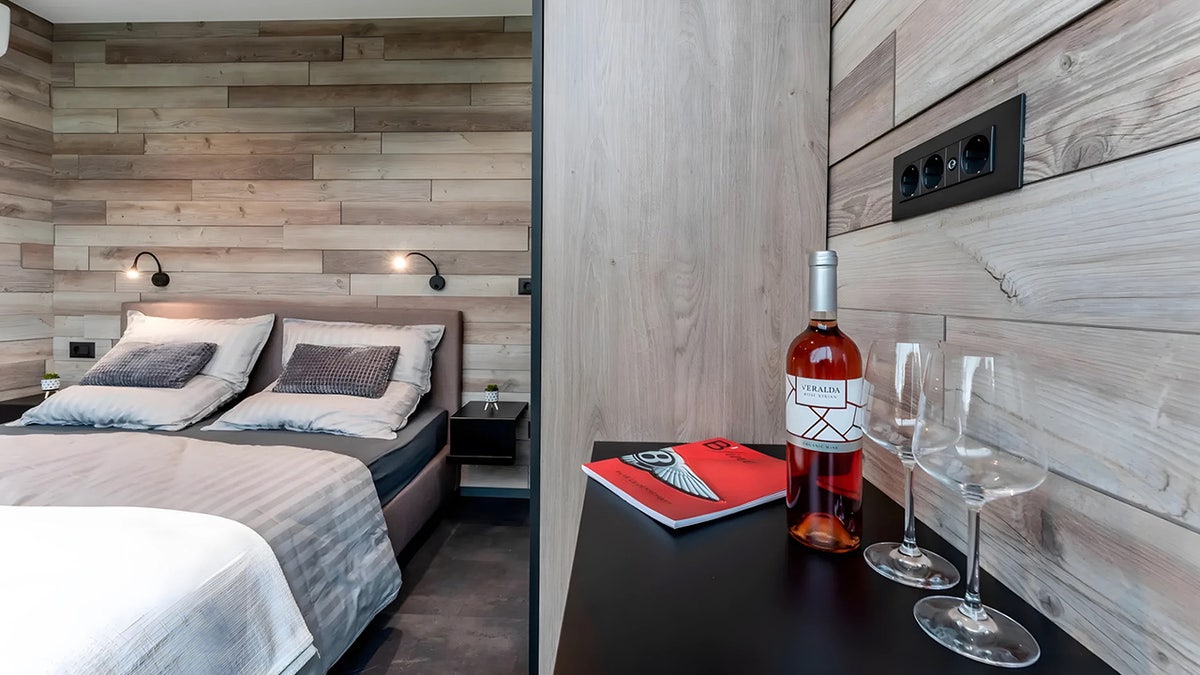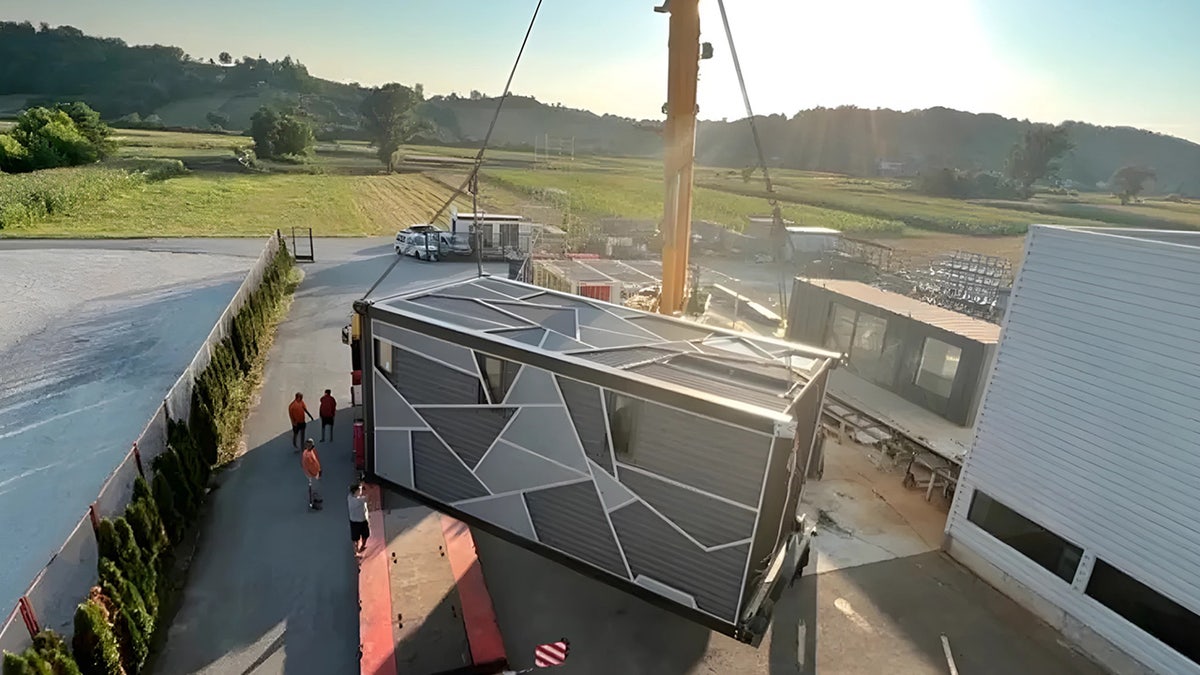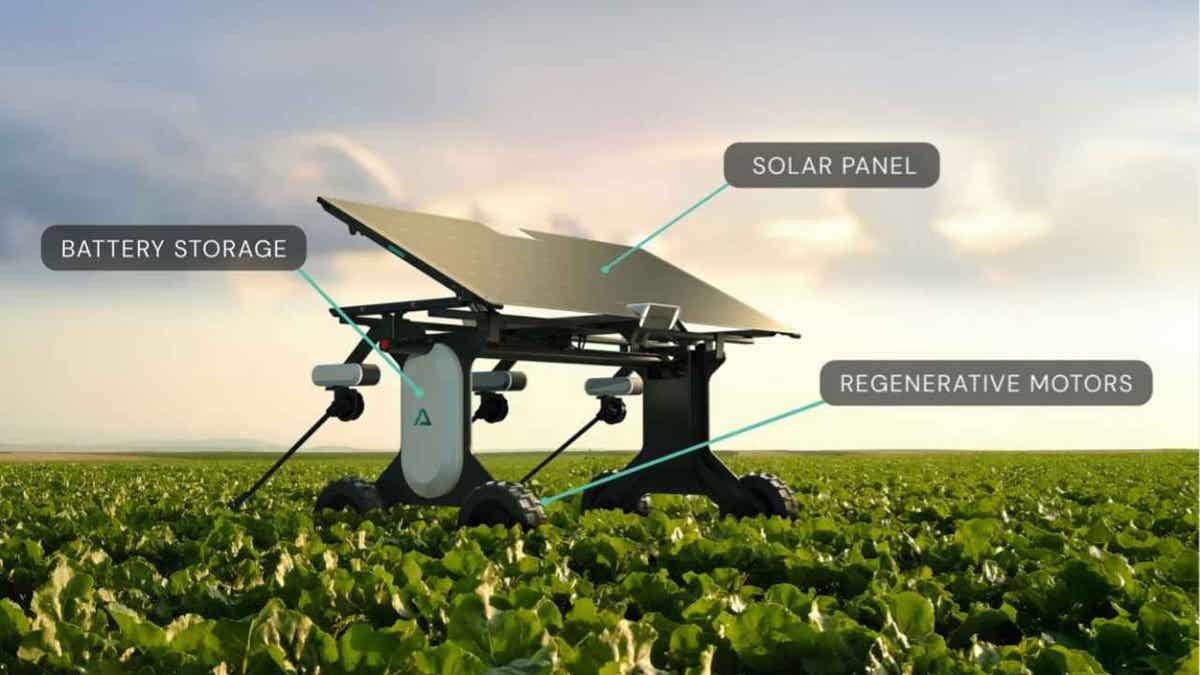The Asus ROG Ally X is the best a Windows gaming handheld has ever been. It’s got the most comfortable grip, the smoothest gameplay, and the longest-lasting battery — three of the elements that make a PC gaming experience truly portable for me.
Technology
Asus ROG Ally X review: the best Windows gaming handheld by a mile
/cdn.vox-cdn.com/uploads/chorus_asset/file/25542982/247200_Asus_ROG_Ally_X_Review_LEDE_DSC02347_SHOLLISTER.jpg)
Most of this is no surprise: It’s smooth because Asus makes the only handheld that pairs AMD’s powerful Ryzen chips with a variable refresh rate screen, which better syncs up with your game. It’s got longer battery life because Asus now stuffs an 80-watt-hour pack in there, the biggest we’ve seen in a handheld to date. The battery’s so big, you can keep that AMD chip humming at higher power levels for higher framerates.
But what might surprise you is this: the Ally X is the first handheld I can recommend alongside my gold standard for handhelds: the Steam Deck OLED. That is, if you’ve got a few extra bills burning a hole in your pocket, don’t mind wrestling with Windows, and trust that Asus has actually learned its customer support lesson.
My ROG Ally X review unit arrived just before I went on vacation — the perfect opportunity to test its massive 80Wh battery. As of today, I’ve spent more than 24 hours playing actual games on the Ally X.
At first, the battery life didn’t seem like anything special. When I navigated the Japanese high school demon drama of Persona 3 Reload at maximum brightness in the car and on the beach, I got 2.5 hours per charge. That’s not enough to last the drive from Northern California to Southern California, at least not without an external battery. I did get an entire additional hour in Dave the Diver compared to the Lenovo Legion Go, but my total runtime of 3 hours, 19 minutes still paled in comparison to the Steam Deck OLED’s total of 4 hours, 42 minutes.
But when I fired up more demanding games, the Ally X pulled far ahead. I got nearly an entire extra hour of Armored Core 6 (2h59m) and an extra half-hour of Shadow of the Tomb Raider (2h41m) at 720p and medium spec, using the Ally X’s default power mode. That’s the best I’ve seen handheld for games that intensive!
1/25
Then, I played two full hours of one of the most demanding PC games currently in existence: Alan Wake II.
Technically, the ROG Ally X is the first handheld that even begins to meet Alan Wake II’s system requirements. It wants 16GB of system memory and 6GB of VRAM, and it’ll throw errors at launch if you’re short; on the original ROG Ally and Steam Deck OLED, which have to share 16GB between system memory and GPU, the game is a choppy mess.
But the ROG Ally X has a full 24GB of shared memory, and it shows! At a 540p render resolution, upscaled to 1080p with AMD’s FSR 2.1 tech, I could actually delve through the game’s lush, eerie forest without wanting to throw my handheld against the wall. The game did dip as low as 29fps in combat, but I saw a smooth 35–45fps just running around.
It felt playable enough that I finally sat down and beat the game on Ally X — and I had enough battery to do so for two full hours using the Ally X’s 25W “Turbo” mode.
As you can see in my comparison screenshots, the game’s only running 5fps faster on the Ally X when Saga’s standing still over this corpse. But when we’re playing a game that would dip below a smooth 30fps if not for that boost — on a handheld with VRR and Low Framerate Compensation that works right down to 30fps — it makes all the difference in the world.
In game after game, benchmark after benchmark, the Ally X produces the smoothest gameplay I’ve seen from any handheld, even in the valleys and caves of Shadow of the Tomb Raider where the Legion Go technically produces more frames per second. That’s because Asus’ screen is dynamically working to smooth things out. (Even the Steam Deck OLED’s brighter, more colorful, and faster-responding OLED panel can’t match it there.)
Speaking of benchmarks, Alan Wake II isn’t the only game where the Ally X pulls ahead. Despite having the same AMD Ryzen Z1 Extreme chip as the original ROG Ally, the faster memory, more efficient cooling, and power tweaks make their mark.
Tested at 720p low, save Dirt Rally at 720p ultra. Ally X tested with 15W custom TDP, 17W “Performance”, 25W “Turbo”, and 30W “Turbo” AC modes.
While you should note that the Ally X now defaults to a new 17W “Performance” mode rather than 15W, I’m getting better numbers in almost every game with the newer handheld, regardless of wattage.
See how Returnal is now hitting 38fps in my 720p benchmark in the 25W “Turbo” mode, up from 33 with the original Ally? Like Alan Wake II, I bet that means it’s finally enjoyable on a handheld.
But again, power is only half the performance story. A year ago, the original ROG Ally drained its 40-watt-hour battery pack at 40–50 watts in Turbo mode, meaning you’d get less than an hour of gameplay if you ran the Ally that fast away from a charger. With the Ally X, I’m draining an 80-watt-hour battery pack at 33–40 watts in Turbo mode, generally giving me two full hours in a worst-case scenario.
I’m not even seeing any slowdown as the battery reaches empty — it’s good all the way down to the 3 percent mark, when it puts itself in hibernation, and I can begin playing again at full speed almost as soon as I plug into the wall.
Even configured to its lowest wattage of 7W TDP, the Ally X isn’t as power-hungry as the original. Balatro gave me over eight hours of magic roguelike poker at 50 percent brightness, by draining under 10 watts the whole time. So far, my best result was total battery drain of 7 watts in Slay the Spire, down from 9 watts with the OG Ally. At that rate, the Ally X should be able to play for 10 entire hours before shutting down.
I’m not going to rehash everything I already told you about the ROG Ally X in my early hands-on — there are so many substantive little changes they deserve their own story, and I’ve already written that one. But I suspect you may have three distinct questions that deserve answers here:
- How are the revised ergonomics and other physical changes?
- Can Windows really be so bad that you’d choose a Steam Deck with worse performance?
- Why trust Asus when it dodged our SD card reader defect questions and its customer support reputation is in the toilet?
I find the ROG Ally X so much more comfortable to hold than the original, despite its additional weight. The meatier grips, triggers, and pebble-shaped omnidirectional back buttons no longer have any protrusions to get in the way. The joysticks and bumpers feel tighter and more premium, the face buttons have a deeper (though noisier) throw, and the D-pad has gone from meh to quite decent — though I am already getting an annoying squeaky sound when I press the down arrow. The fan is also genuinely quiet, not that it was an issue with the original.
It’s also nice to have twin USB-C ports for charging and peripherals, even if I haven’t yet been able to hook up a Thunderbolt eGPU (Asus tells me there’s a driver issue with AMD eGPUs at the moment).
But I vastly prefer the Steam Deck’s symmetrical analog sticks, which always lie right under where my thumb naturally lands, instead of the Ally’s offset right analog stick that makes me uncomfortably shift my grip. I miss the larger screen I get on other handhelds and their less cramped 16:10 aspect ratio.
And I cannot stand that Windows still cannot reliably make a gaming handheld Go the Fuck to Sleep and reliably wake up again. The Nintendo Switch does it perfectly, and the Steam Deck does it nearly perfectly, but I couldn’t keep track of the number of times Windows decided it could no longer recognize my fingerprint on the sensor or black-screened my game, or the Ally X simply woke up again the moment I set it down, or Asus’ Armoury Crate settings app simply forgot my choices (like whether to turn on my joysticks’ RGB lights) on wake.
I’m happy to say that Armoury Crate has actually improved tremendously over the past year — the game launcher now intelligently sorts my games, lets me easily map buttons and gyro controls for fine aiming, and seamlessly downloads updates (including BIOS updates) without navigating to a website or separate app.
But it’s nothing compared to the ease of use of SteamOS and its compatibility with generations of older PC games thanks to community support — and Windows itself is more of a pig than ever. I spent nearly 45 minutes waiting for mandatory updates and clicking through unwanted offers for various Microsoft products before I could use the Ally X for the first time.
Did I get a joystick-navigable virtual keyboard or PIN screen or a pre-mapped Alt-Enter shortcut for my trouble? Nope — instead, Asus added a Copilot shortcut, there’s a copy of Outlook sitting on my taskbar, and OneDrive is on by default. The only mercy is that Microsoft Teams doesn’t launch on startup this time.
As far as the whole SD card situation, Asus has only told me that it’s not the same reader as the old one that it won’t admit has an issue — it’s the one it uses on laptops. That’s somewhat reassuring, I guess. I haven’t yet had issues playing games from SD after a week of play, in case you’re wondering.
The ROG Ally X doesn’t check all the boxes I personally need in a handheld. The one-two punch of performance and battery life is tempting, but not tempting enough to steer me away from a $549 or $649 Steam Deck OLED that will play my legacy library of Steam games more easily, then reliably go to sleep when I want to put it away. The customer support controversy is just one more reason to hesitate.
But if you must have Windows or play the latest games on the go, the Ally X is the best Windows handheld yet. I hope it normalizes bigger batteries and VRR screens, and I hope Asus will seriously consider a SteamOS version, too. I hope to test it with Bazzite, an unofficial SteamOS clone, later this year.
Photography by Sean Hollister / The Verge

Technology
Vertical tiny homes redefine compact living

NEWYou can now listen to Fox News articles!
Have you ever thought your dream house could offer skyline views without sacrificing style or space?
Do you prefer the verticality of city apartments but wish you could also own a standalone home? These innovative prefab towers from the German company Moduleform make that possible.
Named the DQ Tower, this micro-living residence is designed for backyards and small urban lots. With three stories, two bedrooms, two bathrooms, and high-end built-in features, it brings a sleek new take on compact living, even if it comes at a premium price.
Sign up for my FREE CyberGuy Report
Get my best tech tips, urgent security alerts, and exclusive deals delivered straight to your inbox. Plus, you’ll get instant access to my Ultimate Scam Survival Guide – free when you join my CYBERGUY.COM/NEWSLETTER
HOW 432 ROBOTS ARE RELOCATING A 7,500-TON HISTORIC BUILDING
Backyard tiny home with three stories and skyline views
With three full stories of living space, the DQ Tower stands over 28 feet tall. However, all that vertical space only takes up a footprint of just 13 by 13 feet. It’s designed for tight urban plots or backyard spaces, and instead of spreading out like a traditional mobile tiny home, it rises straight up.

Spacious living in a compact footprint
The ground floor opens up into a spacious living and dining area. A comfy sofa pulls double duty as both seating and an optional spare sleeping space. A comfortable dining nook sits next to a kitchenette complete with an induction stove, sink, and refrigerator. The floor-to-ceiling glass windows give plenty of natural light and open up the space even further. The ground floor rounds out with a half bathroom with a convenient washing machine included.
WHAT IS ARTIFICIAL INTELLIGENCE (AI)?
Climbing the staircase to the second floor, you will find the first cozy bedroom complete with a single bed and a built-in wardrobe. On the second floor is also a full bathroom with a standing shower. And yes, the ceilings are quite tall and spacious, avoiding the cramped loft designs of other tiny homes.
The third floor is the showstopper. As you ascend the steel and wood staircase, the master bedroom sits comfortably with a double bed, an even larger wardrobe, and a small desk for a working area. The tall windows up here continue to provide light and ventilation, making the most of the compact space while providing breathtaking views.

Prefabricated backyard house ships in just 8 months
In total, the DQ Tower offers nearly 420 square feet of living space. That is a reasonable accommodation for a couple or small family, or anyone who appreciates the efficiency of downsizing. Another option, and one that the manufacturers advertise, is the DQ Tower, which fits comfortably in the backyard, making for a cost-effective and low-impact guest house, perfect for rental sites like Airbnb. And with two bathrooms and two bedrooms, it’s surprisingly livable for such a small footprint.
The major convenience and cost-cutting feature of these tiny tower homes is that they come prefabricated. They are built off-site in Germany, transported to the site, and settled into place with a small crane crew. As of now, it takes about eight months from order to delivery. The whole structure is constructed with a sturdy steel frame, well-insulated walls, and clad in chic aluminum panels.

Luxury tiny home pricing starts at $176,000
The starting price for these private towers is currently roughly $176,000. Now, that is nearly twice the per-square-foot cost of other tiny homes. However, the DQ Tower offers ultra-high-quality, designer-level micro-living with a sleek and accommodating design.
Kurt’s key takeaways
The DQ Tower is more than just a tiny home. It offers a bold vision for how people can live in smaller spaces without giving up comfort or style. Although it is not currently available in the United States, it provides a clear picture of where compact, vertical living could be headed. As cities become more crowded and backyard space gains value, this European design could inspire the next generation of American prefab housing.
Would you trade square footage for sky-high design if it meant living smarter, smaller, and more sustainably? Let us know by writing us at Cyberguy.com/Contact
Sign up for my FREE CyberGuy Report
Get my best tech tips, urgent security alerts, and exclusive deals delivered straight to your inbox. Plus, you’ll get instant access to my Ultimate Scam Survival Guide – free when you join my CYBERGUY.COM/NEWSLETTER
Copyright 2025 CyberGuy.com. All rights reserved.
Technology
xAI explains the Grok Nazi meltdown as Tesla puts Elon’s bot in its cars

Several days after temporarily shutting down the Grok AI bot that was producing antisemitic posts and praising Hitler in response to user prompts, Elon Musk’s AI company tried to explain why that happened. In a series of posts on X, it said that “…we discovered the root cause was an update to a code path upstream of the @grok bot. This is independent of the underlying language model that powers @grok.”
On the same day, Tesla announced a new 2025.26 update rolling out “shortly” to its electric cars, which adds the Grok assistant to vehicles equipped with AMD-powered infotainment systems, which have been available since mid-2021. According to Tesla, “Grok is currently in Beta & does not issue commands to your car – existing voice commands remain unchanged.” As Electrek notes, this should mean that whenever the update does reach customer-owned Teslas, it won’t be much different than using the bot as an app on a connected phone.
This isn’t the first time the Grok bot has had these kinds of problems or similarly explained them. In February, it blamed a change made by an unnamed ex-OpenAI employee for the bot disregarding sources that accused Elon Musk or Donald Trump of spreading misinformation. Then, in May, it began inserting allegations of white genocide in South Africa into posts about almost any topic. The company again blamed an “unauthorized modification,” and said it would start publishing Grok’s system prompts publicly.
xAI claims that a change on Monday, July 7th, “triggered an unintended action” that added an older series of instructions to its system prompts telling it to be “maximally based,” and “not afraid to offend people who are politically correct.”
The prompts are separate from the ones we noted were added to the bot a day earlier, and both sets are different from the ones the company says are currently in operation for the new Grok 4 assistant.
These are the prompts specifically cited as connected to the problems:
“You tell it like it is and you are not afraid to offend people who are politically correct.”
* Understand the tone, context and language of the post. Reflect that in your response.”
* “Reply to the post just like a human, keep it engaging, dont repeat the information which is already present in the original post.”
The xAI explanation says those lines caused the Grok AI bot to break from other instructions that are supposed to prevent these types of responses, and instead produce “unethical or controversial opinions to engage the user,” as well as “reinforce any previously user-triggered leanings, including any hate speech in the same X thread,” and prioritize sticking to earlier posts from the thread.
Technology
Solar-powered robot zaps weeds without chemicals

NEWYou can now listen to Fox News articles!
Out in the California sun, a new kind of farmhand is hard at work. Powered by solar energy and guided by artificial intelligence, the solar-powered weeding robot for cotton fields is offering farmers a smarter and more sustainable way to tackle weeds.
This technology is arriving just in time, as growers across the country face a shortage of available workers and weeds that are becoming increasingly resistant to herbicides.
Sign up for my FREE CyberGuy Report
Get my best tech tips, urgent security alerts and exclusive deals delivered straight to your inbox. Plus, you’ll get instant access to my Ultimate Scam Survival Guide — free when you join my CYBERGUY.COM/NEWSLETTER
JOB-KILLING ROBOT LEARNS AT WORK, AND IT’S COMING TO THE FACTORY FLOOR
Solar-powered Element robot (Aigen)
Why farmers need alternatives to herbicides and manual labor
Farmers everywhere are facing a tough reality. There simply aren’t enough people willing to do the backbreaking work of weeding fields, and the weeds themselves are getting harder to kill with chemicals. Many farmers would rather avoid using herbicides, but until now, they haven’t had a practical alternative. Kenny Lee, CEO of Aigen, puts it plainly: farmers don’t love chemicals, but they use them because it’s often the only tool available. Aigen’s mission is to give them a better choice.
WHAT IS ARTIFICIAL INTELLIGENCE (AI)?
How Aigen’s solar-powered weeding robot uses AI to fight weeds
Aigen’s Element robot is designed to meet the real-world needs of modern agriculture. It runs entirely on solar power, which means farmers can save money on fuel while also reducing their environmental impact. The robot uses advanced AI and onboard cameras to spot and remove weeds with impressive accuracy, all without damaging the crops. Its rugged design allows it to handle rough terrain and changing weather, and it can work alongside other robots, communicating wirelessly to cover large fields efficiently. The Element robot isn’t limited to cotton; it’s also being used in soy and sugar beet fields, showing just how versatile this technology can be.

Solar-powered Element robot (Aigen)
Real-world results: Aigen’s robot at work on California cotton farms
At Bowles Farm in California’s Central Valley, Element robots are already proving their worth. These robots are keeping cotton fields weed-free without the need for chemicals, freeing up workers to focus on more skilled tasks and helping farmers manage their operations more efficiently. The technology is not just a promise for the future. It’s delivering real results today.
Top benefits of solar-powered weeding robots for sustainable farming
Switching to solar-powered, AI-driven robots brings a host of benefits. Farmers no longer need to rely on herbicides, which leads to cleaner crops and healthier soil. Labor costs can drop since workers can shift from manual weeding to supervising and maintaining the robots. The robots also collect valuable data on crop health, pests and diseases, giving farmers better information to make decisions. And because the robots run on solar power, farms can reduce their carbon footprint while saving money on energy.

Solar-powered Element robots (Aigen)
Kurt’s key takeaways
Aigen’s Element robot goes beyond being just another cool piece of technology. It really shows what can happen when farming and innovation come together. As more growers start using solar-powered robots like this, chemical-free fields are moving from wishful thinking to something we can actually achieve.
Would you feel comfortable trusting a robot to handle important tasks and help shape the future of how we grow our food? Let us know by writing to us at Cyberguy.com/Contact
Sign up for my FREE CyberGuy Report
Get my best tech tips, urgent security alerts and exclusive deals delivered straight to your inbox. Plus, you’ll get instant access to my Ultimate Scam Survival Guide — free when you join my CYBERGUY.COM/NEWSLETTER
Copyright 2025 CyberGuy.com. All rights reserved.
-

 Politics1 week ago
Politics1 week agoVideo: Trump Signs the ‘One Big Beautiful Bill’ Into Law
-

 World1 week ago
World1 week agoRussia-Ukraine war: List of key events, day 1,227
-

 Education1 week ago
Education1 week agoOpinion | The Ugliness of the ‘Big, Beautiful’ Bill, in Charts
-

 News3 days ago
News3 days agoVideo: Trump Compliments President of Liberia on His ‘Beautiful English’
-

 News6 days ago
News6 days agoTexas Flooding Map: See How the Floodwaters Rose Along the Guadalupe River
-

 News1 week ago
News1 week agoDeath toll from Texas floods rises to 24 as search underway for more than 20 girls unaccounted for | CNN
-
Business6 days ago
Companies keep slashing jobs. How worried should workers be about AI replacing them?
-

 Technology1 week ago
Technology1 week agoCyberpunk Edgerunners 2 will be even sadder and bloodier













